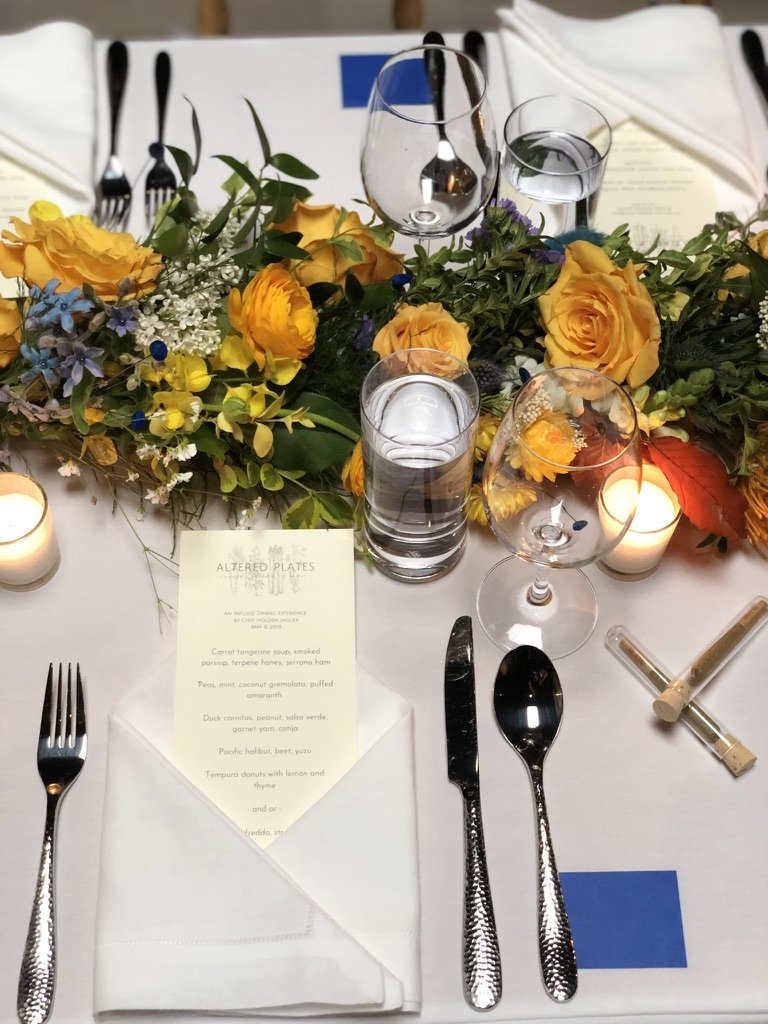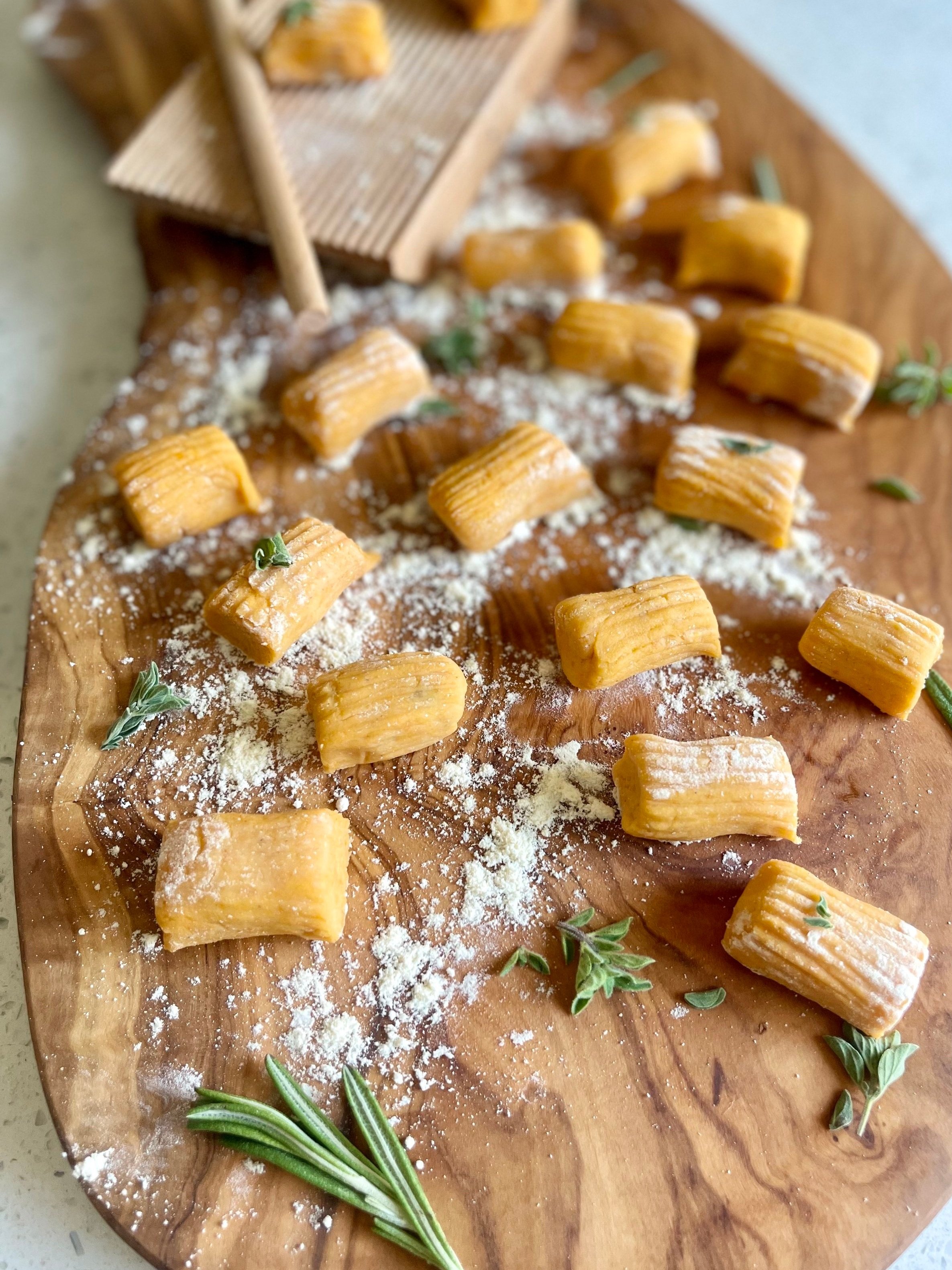Potent Pairings
How to Taste Cannabis and Pair it With Food
by Rachel Burkons
PHOTO: ALTERED PLATES
Ah, the magical union of cannabis and food—truly a match made in heaven. And not just because Cheetos never tasted so good after you hit your bong. Not only does cannabis elevate the way we experience flavors, but its pungent flower also possesses the incredible power to create delightful pairings with our favorite dishes.
For those who have trained their palates to discern one note from the next, exploring cannabis pairings is not unlike the concept of wine pairings. But while even the novice wine drinker may have seen someone swirl and swish as part of a wine tasting and gets a sense of what to “do” in that setting, most people might look rather confused if asked to describe how to taste cannabis. But knowing how to taste cannabis is an essential step in understanding the flavors in each strain, which then gives you the tools to think about how you might pair those flavors with different food and drinks.
I took on thinking about how to teach people how to taste cannabis as part of my work at Altered Plates, a culinary cannabis hospitality group I co-founded with my brother Chef Holden Jagger in 2017. There, we specialize in creating flower-pairing dinners that operate very much like a traditional wine pairing dinner, with each course paired thoughtfully and intentionally with a specific strain. We begin each of these dinners with what we call a three-step tasting method. This simple process is designed to help you understand the nuance of flavor in your flower and help guide you through matching those flavors with food and drink.
How to Taste Cannabis
There’s no better way to get a sense for what flavors await in each strain than by smelling your flower. This step is important for several reasons. First, evaluating aroma indicates which terpenes may be present in a specific strain. If it smells bright and citrusy, that’s limonene in the lead; or if it’s soft and floral, it’s linalool driving that scent.
Recognizing those terpenes also helps guide you in knowing what the effects of that particular strain may be. If you know a strain may have limonene in it, you may expect it to have an uplifting, invigorating effect. Similarly, if you smell deep, dank notes of ripe mango, you may expect a more sedative experience thanks to powerful myrcene.
If your flower is in a jar, you may do this step by simply nosing the jar. You may also gently squeeze the bud, and then smell your fingers, which has the added benefit of evaluating the flower’s resinousness and moisture.
At Altered Plates, we serve fresh-hand-rolled joints in glass tubes, which provide a concentrated, clean and bright expression of aromas. I recommend this method if you’re really looking to train your palate, as fresh-grinding the bud brings the flavor to the forefront and glass storage offers a neutral aroma, unlike most plastics.
Step Two: Terpene Pull/Dry Pull
This step offers the most pure expression of flavor for the flower. The best way to execute step two is with a joint, but you may also do a dry pull with a (super clean) bong or pipe. The process is simple: Without lighting it, bring the joint to your lips and inhale through it. This brings the flavor of the flower directly onto your palate and helps you get more nuanced in its description. Here, you’re able to tease out notes of orange blossom rather than general citrus, or dusty rose instead of broadly floral.
It’s important to note that doing this step shouldn’t be relegated to fancy pairing dinners: Tasting your cannabis and paying attention to the flavors in specific strains as you smoke them will help you understand what you like and don’t like and will also give you insight into the terpenes that are best suited for your personal endocannabinoid system. Do a dry pull every time you’re about to light a joint and start writing down your tasting notes to begin your cannabis sensory journey.
Step Three: Light it!
Finally, it's time for the grand finale—ignition. Lighting up is obviously the most fun step, but in terms of evaluating flavor, it’s a fleeting moment: In the first inhalation of a fresh joint or bowl, you’ll capture the essence of the flower in its combustible form. This step brings its own unique flavor into the equation, turning limonene into roasted lemons and pinene into charred rosemary.
Here, you’ll pay attention to the weight of the smoke, its smoothness, acidity, and the way the flavor evolves across your palate. Does it have a long, lingering finish? Does it burn smoothly, quickly, evenly? What color is the smoke and ash? And don't forget to take note of the effect it has on you—does it transport you to dreamland or invigorate your senses? Are you unearthing and organizing your CD collection, or are you heading out for a hike?
How to Pair Cannabis With Food
Cannabis flower is paired with food at an Altered Plates dinner. PHOTO: ALTERED PLATES
When pairing cannabis with food and drink, flavor is an obvious consideration. Unsurprisingly, many of the flavors we love in food are also derived from terpenes, which are found across a wide variety of common food and beverage ingredients. When matching the terpenes in your cannabis with the terpenes and flavors in your food, there are several key considerations:
Flavor: To Match or to Contrast? This question falls under general considerations in regard to any kind of pairing, and its rules are rooted and well documented in flavor wheels and tomes like The Flavor Bible. These principles outline two distinct paths for pairing flavors: You may either match the flavors, pairing like with like, or you may contrast flavors, pairing ingredients and dishes that reside on opposite ends of the flavor wheel.
This terpene flavor wheel from Goldleaf is inspired by the traditional flavor wheel and explores the aromas and categories of terpenes. PHOTO: Rachel Burkons
Matching similar flavors creates a harmonious balance, where one note encircles and enhances the other, enveloping your palate with robust, full-bodied flavors. Matching dissimilar flavors bounces them off each other, lifting each other up along the way, providing palate-awakening contrast that invigorates and excites.
Effect: With cannabis pairings, it is important to consider the effect of the strain when you’re pairing with food and drink. This is just one note of many to think about, but it is an important one. And it’s not unique to cannabis, either: You wouldn’t pair your Sunday brunch with a 20 year-old Scotch, and you wouldn’t match your Porterhouse with a Pina Colada, would you?
Similarly, you don’t want to match a heady, potent strain with a bright, zippy ceviche, and a bright zippy offering that tastes like crushed Sweet Tarts is probably not the best match for a hearty lamb shank. Matching uplifting strains and light, fresh dishes is a more appropriate pairing, and when you’re already half-asleep after eating a hearty pasta dish, a sedative flower finish is the perfect dessert.
Recommended Pairings
Putting these techniques into practice, here are a few recommended pairings that work across food, drink and cannabis. Give your own pairings a try and let us know what you think!










